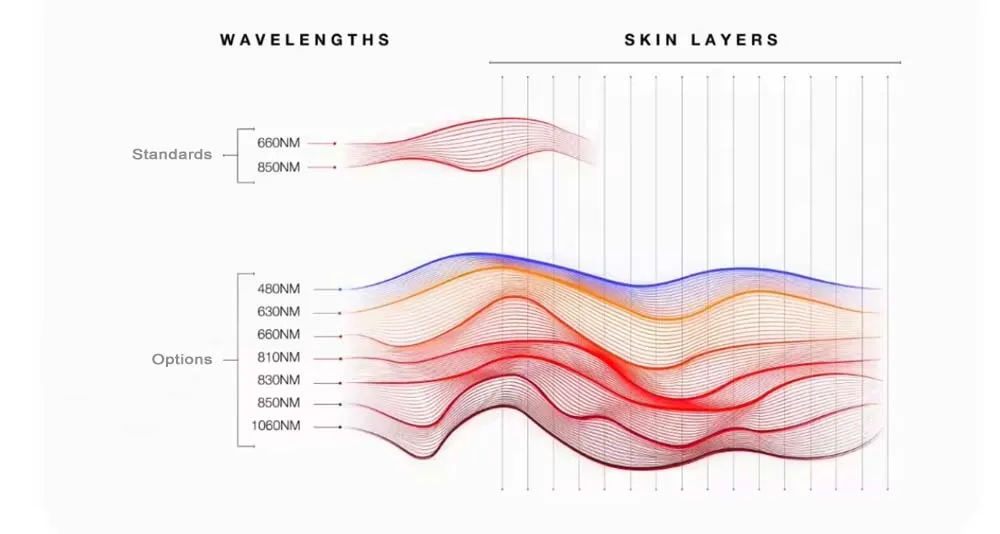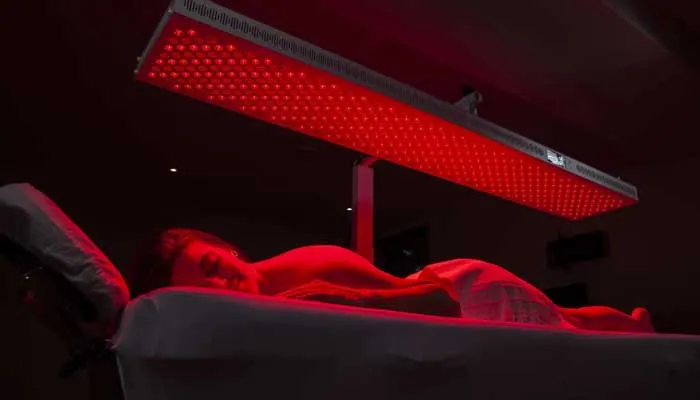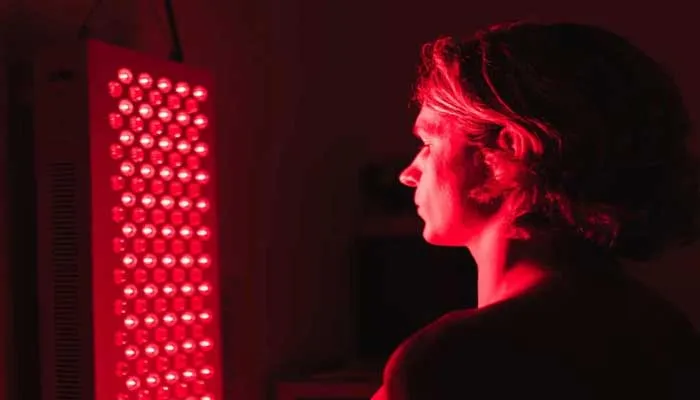LED light therapy has gained significant traction in recent years for its wide range of applications, including anti-aging, pain relief, wound healing, and general wellness. This non-invasive treatment uses specific wavelengths of light to stimulate cellular processes, offering benefits like enhanced collagen production, reduced inflammation, and improved circulation. However, despite its many advantages, it is essential to understand the contraindications for LED light therapy to ensure its safe and effective use. This article explores the potential risks, specific conditions, and precautions necessary for optimal results.
What is LED Light Therapy?
LED light therapy employs light-emitting diodes to deliver specific wavelengths of light to the skin and underlying tissues. Different wavelengths serve distinct therapeutic purposes:
- Blue Light: Primarily used for treating acne by targeting bacteria and reducing inflammation.
- Red Light: Known for its ability to stimulate collagen production, improve skin elasticity, and accelerate wound healing.
- Near-Infrared Light: Penetrates deeper layers of tissue, making it effective for pain relief and enhancing cellular repair.
The therapy works by stimulating mitochondrial activity in cells, increasing adenosine triphosphate (ATP) production, which powers cellular repair and regeneration. Despite these benefits, LED light therapy is not suitable for everyone, as certain conditions and factors may pose risks.

General Contraindications for LED Light Therapy
Specific Medical Conditions
- Active Cancer: LED light therapy may stimulate cell metabolism, potentially accelerating the growth of malignant cells. While some studies suggest that certain wavelengths might have therapeutic effects on cancer-related symptoms, this remains a controversial and under-researched area. Consultation with an oncologist is essential.
- Photosensitivity Disorders: Conditions like systemic lupus erythematosus (SLE) or photosensitive eczema may be exacerbated by light exposure. Patients with these conditions should avoid therapy without medical clearance.
- Seizure Disorders: Some wavelengths and flashing lights can trigger seizures, especially in individuals with photosensitive epilepsy. Devices with flicker-free technology are recommended to minimize this risk.
- Uncontrolled Diabetes: Diabetic patients may experience delayed wound healing, making the application of LED light therapy on wounds potentially problematic.
Special Populations
- Pregnant Women: The effects of LED light therapy on fetal development are not well understood. Although red and near-infrared light are generally considered safe, treatment on the abdomen is discouraged to avoid unknown risks.
- Children: Children’s skin and eyes are more sensitive to light. LED light therapy should only be administered under strict supervision and with professional guidance.
Eye Conditions
Exposure of the eyes to intense LED light, particularly blue and red wavelengths, can lead to retinal damage or eye strain. Protective eyewear is mandatory during treatment to mitigate these risks.
Use of Certain Medications
- Photosensitizing Drugs: Medications such as tetracycline, isotretinoin, and certain antidepressants increase the skin’s sensitivity to light, heightening the risk of burns or irritation.
- Anticoagulants: These medications may exacerbate skin sensitivity, increasing the likelihood of adverse reactions during therapy.
Potential Risks and Side Effects
Although LED light therapy is generally safe, it’s not entirely free from risks. Here are some common side effects and issues that might arise:
- Skin Reactions: Some people might notice redness, itching, or even a mild burning sensation after using led light therapy. These reactions are often temporary and usually go away after a short break. However, if the irritation persists, it’s best to stop the therapy.
- Eye Problems: Bright lights can be hard on the eyes. If you don’t use proper protective goggles, you could experience eye strain, blurred vision, or even retinal damage over time. Always use eye protection during sessions.
- Sleep Disruption: Using red light therapy late at night might confuse your body’s internal clock, disrupting your natural sleep patterns. It’s a good idea to keep your sessions earlier in the day to avoid messing up your sleep.
- Headaches: Some users report mild headaches, especially if they’ve been exposed to the light for too long or at a high intensity. Taking breaks and limiting session lengths can help prevent this.
- Overheating: While LED devices don’t get as hot as some other light therapies, prolonged sessions or high-powered devices can make the skin feel overly warm, which might be uncomfortable.
- Ineffectiveness with Overuse: More isn’t always better. Overdoing LED light therapy can actually reduce its benefits. Stick to recommended session lengths and frequencies.
- Itching or Dryness: Some people might feel their skin becoming dry or itchy after a session. Moisturizing the treated area can help alleviate these symptoms.
In rare cases, more severe reactions might occur, such as:
- Burns: Overexposure or using faulty devices could lead to skin burns. Please consult seller before buying. If you not sure, you can contact us for ideas.
- Circadian Rhythm Issues: If you’re sensitive to light exposure, using led therapy too close to bedtime might throw off your body’s natural rhythm, making it harder to fall asleep.
By keeping these potential risks in mind and using led light therapy responsibly, you can minimize side effects and get the most out of your treatment.

Precautions to Avoid Led Light Therapy Contraindications
To minimize risks and ensure effective treatment, the following precautions should be observed:
- Use Certified Devices: Select products with reputable certifications, such as CE or RoHS or FCC, to guarantee safety and quality standards.
- Adhere to Recommended Guidelines: Limit sessions to 15-30 minutes daily, with a maximum of five sessions per week. Avoid prolonged exposure or excessive use.
- Consult Professionals: Individuals with pre-existing conditions or those on medications should seek medical advice before starting therapy.
- Protective Measures: Always wear protective goggles to shield the eyes and reduce the risk of retinal damage.
- Gradual Introduction: Start with lower intensity and shorter sessions to allow the body to adjust and minimize potential side effects.
Case Studies and Research
Many people have found LED light therapy life-changing when used correctly. For example:
- Scar Healing in Cancer Survivors: Jane, a cancer survivor, used red light therapy under her doctor’s supervision to improve the healing of surgical scars. Over a few months, her scars became noticeably less visible, and she reported reduced discomfort.
- Photosensitivity Management: Sam, who struggled with mild photosensitivity, started using a low-intensity LED device after consulting his dermatologist. By gradually increasing the light intensity, he was able to enjoy the benefits without triggering adverse reactions.
- Pain Relief for Chronic Conditions: Maria, a long-time sufferer of arthritis, incorporated near-infrared light therapy into her routine. Within weeks, she experienced less joint stiffness and improved mobility.
Innovative Research
We have cooperate with some organizations. Ongoing studies are constantly exploring new ways to make LED therapy safer and more effective:
- Custom Wavelength Filters: Researchers are working on devices with filters that block potentially harmful wavelengths while still delivering therapeutic light. These could make treatments safer for people with sensitive skin or conditions like rosacea.
- Pulsing Technology: Newer devices use pulsing light to minimize heat build-up and reduce the risk of irritation. This technology allows for more comfortable sessions, especially for people new to light therapy.
- Enhanced Pain Relief Protocols: Studies are testing the combined use of red light therapy with other treatments, like heat packs, to boost its effectiveness in relieving muscle and joint pain.
Conclusion
LED light therapy offers significant benefits for a wide range of conditions, from skin rejuvenation to pain management. However, understanding its contraindications is crucial to prevent harm and maximize effectiveness. By selecting certified devices, consulting professionals, and following recommended guidelines, users can safely harness the therapeutic power of LED light therapy.
References
- Höfling DB et al., “Low-level laser therapy in chronic autoimmune thyroiditis: a pilot study,” Lasers Surg Med, 2010.
- Morcos N et al., “Phototherapeutic Effect of Low-Level Laser on Thyroid Gland of Gamma-Irradiated Rats,” Photochem Photobiol, 2015.
- Harvard Health, “Blue light has a dark side.”
- NIH, “Anti-inflammatory effects of RLT.”
- Chaves ME et al., “Effects of low-power light therapy on wound healing: LASER x LED,” An Bras Dermatol, 2014.
- Albertini R et al., “Effects of phototherapy on the healing process of cutaneous wounds in rats,” Lasers Med Sci, 2007.
- Bjordal JM et al., “A systematic review of low-level laser therapy with location-specific doses for pain from chronic joint disorders,” Australian Journal of Physiotherapy, 2003.
- Kim WS, Calderhead RG., “Is light-emitting diode phototherapy (LED-LLLT) really effective?” Laser Ther., 2011.
- Mendis-Handagama SM et al., “Leydig cells, thyroid hormones, and steroidogenesis,” Indian J Exp Biol, 2005.
- Enwemeka CS et al., “Blue 470-nm light suppresses the growth of Salmonella and Methicillin-Resistant Staphylococcus aureus (MRSA) in vitro,” Photomed Laser Surg, 2003.
- NIH, “Low-level light therapy: examining the evidence for cellular repair and inflammation reduction.”
- Percival SL et al., “Use of a low-level laser therapy for wound healing and tissue repair,” Clinical Microbiology Reviews, 2015.
- Hopkins JT et al., “Low-level laser therapy facilitates superficial wound healing in humans,” J Athl Train, 2004.
- Harvard.edu, “The impact of circadian rhythms on sleep and health.”
- Weber JB et al., “Effect of three different protocols of low-level laser therapy on thyroid hormone production,” Photomed Laser Surg, 2014.

FAQ
Light is energy, and different wavelengths of light interact uniquely with our bodies. The electromagnetic spectrum categorizes these wavelengths, which we measure in nanometers (nm). Here’s a simple breakdown:
- Ultraviolet (UV, sunlight): 10–380 nm
- Violet: 380–450 nm
- Blue: 450–495 nm
- Green: 495–570 nm
- Yellow: 570–590 nm
- Orange: 590–610 nm
- Red: 610–700 nm
- Near-Infrared (NIR): 700–900 nm
- Infrared: 900–1400 nm
Each type of light interacts differently with our bodies. UV light, for example, helps produce Vitamin D but can harm the skin with overexposure. Meanwhile, red and near-infrared light are known for their safe and beneficial therapeutic effects.
Red and NIR light penetrate deeper into the body compared to visible light. This makes them particularly effective for therapies targeting cells and tissues. Unlike UV light, they don’t cause skin damage, and their longer wavelengths reach areas like muscles and joints, promoting healing and overall wellness.
Different light therapies serve different purposes:
- UV Light Therapy: Great for small doses of Vitamin D but risky due to potential skin damage.
- Green Light Therapy: Shows promise for pain relief but needs more research.
- Blue Light Therapy: Effective for acne and boosting alertness but can disrupt sleep.
- Red Light Therapy: Widely used for healing, pain relief, and anti-aging benefits.
Blue light is all around us—in sunlight, screens, and LED bulbs. It’s great for treating acne by killing bacteria and can help you stay alert during the day. However, too much blue light before bed can mess with your sleep by suppressing melatonin production. Blue light has also been linked to headaches and poor sleep quality, so moderation is key.
Red light therapy uses wavelengths between 610 and 700 nm to reach your cells’ mitochondria. These “powerhouses” of the cell produce energy, and red light enhances this process by stimulating the production of ATP (adenosine triphosphate). ATP is like fuel for your body, helping improve circulation, reduce inflammation, and kickstart natural healing.
The good news is, red light therapy is generally safe. Some people may experience temporary effects like eye strain, mild headaches, or skin tightness, but these are rare. Following recommended session durations can help prevent these issues.
Infrared light goes even deeper than red and NIR light. It generates heat, which can improve circulation but must be used carefully to avoid burns or overheating. Infrared therapy is powerful but best handled by professionals for serious conditions. For at-home therapy, red and NIR light are safer and more user-friendly.
Red light therapy is generally safe, but some individuals have reported mild headaches or migraines after sessions, especially with prolonged use or overexposure. If you’re prone to migraines, start with shorter sessions and lower light intensity. Always take breaks and monitor how your body responds.
Yes, red light therapy may help reduce certain types of headaches, especially tension headaches, by improving blood flow and reducing inflammation in targeted areas. Some studies suggest it can also alleviate symptoms of migraines when applied correctly. However, it’s not a guaranteed solution and works best as part of a comprehensive headache management plan.
For individuals with epilepsy, there is a potential risk of seizures from flickering light sources, including some red light therapy devices. To minimize this risk, choose devices with low or no flicker, and consult your doctor before starting therapy if you have a history of seizures.
